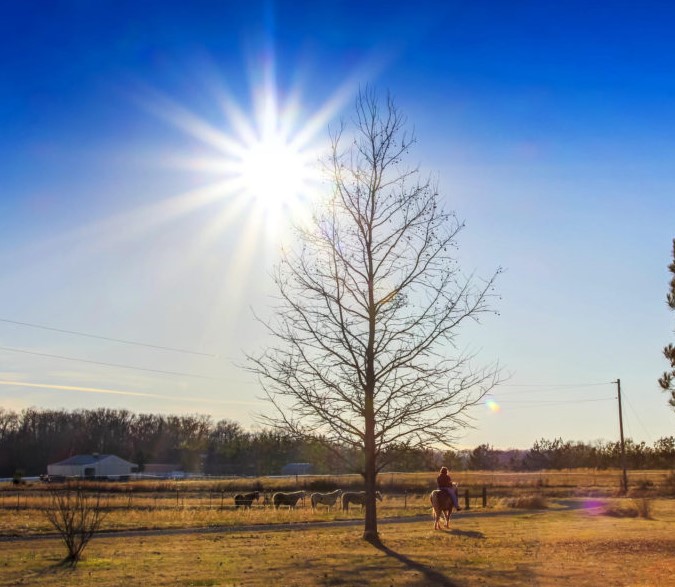Winter likely to end with dry spell, temperature expected to rise

By Pramod Kumar Tandan, Kathmandu, Jan. 11: A team of meteorologists had forecast at least light rainfall across the country while a westerly system was entering Nepal on Sunday last week.
But the expectation became false with no rainfall in many places and traces only in a few places across the country. Light rain gives up to 2 to 4 millimeters of precipitation.
Westerly System loosed its steam very soon and since Wednesday of the last week, the country has been witnessing fine weather along with Kathmandu Valley with the presence of clear sun radiations.
According to the Meteorological Forecasting Division, there is a slim chance of the existing minimum temperature going further down rapidly due to the absence of possibilities of any significant system that could bring adequate rainfall and cold wind in the coming days.
Barun Paudel, a senior meteorologist at the Division, said that since there was no possibility of any significant weather system, this winter is expected to end as a dry winter.
“If the current trend of daily weather continues till a few days, the minimum temperature won’t decrease dramatically until and unless the appearance of any strong weather system.” Paudel told The Rising Nepal Online, “So there is no chance of increasing severe cold and this winter is likely to be marked as a dry one.”
He informed that winter rain is very important for not only winter crops but also for recharge of the Himalayas. Above 5,500 meters, rain falls as snow. Winter precipitation that mainly falls from November to February in Nepal recharges the Himalayas and glaciers whose meltwater in summer is the main source of supply for various rivers.
Winter crops, including wheat, pulses, mustard, and potato require at least light rain to grow. It has been said that the rain from mid-December to mid-January is considered a boon for winter crops.
But in a country where winter rain covers 3.5 per cent of total annual rainfall, only trace rainfalls have been recorded throughout the country so far this year.
The average rainfall in Nepal is about 1600 mm, with about 80 per cent of rainfall occurring during the monsoon season from June and September.
Min Kaumar Aryal, another senior meteorologist at the DHM, said that except for the eastern region’s local system and morning time fog in the Terai range, the country has been dominated by fine weather.
“Due to the presence of clear radiation, maximum temperature has begun to rise with fine weather. If no significant weather system meddles in, we will see this winter’s exit with no rain and no nail-biting cold.”
He added that if any system came with no precipitation like the previous one that would also not decrease the minimum temperature though people feel colder due to the cloudy sky blocks rays of the sun.
On 31 December 2020, while there was no special weather system but also the minimum temperature of various places was recorded the lowest. Kathmandu witnessed the lowest minimum temperature of this winter at 0.8 Degree Celsius whereas Jumla recorded minus 8.5, Jiri minus 3, Jomsom minus 1, and Dipayal 0.4 degrees Celsius.
But the day when the westerly system was active on Monday 4 January 2021, the minimum temperature of the same places increased as Kathmandu had 9.5, Jumla 0.6, Jiri 7.5, Jomsom minus 0.5 and Dipayal 12 degree Celsius.
Though the reasons behind the increase of dry winters, no fall of temperature as in the distant past, and extreme changes in weather are taken as an impact of Climate change, meteorologists consider it as the regular phenomena of changing weather patterns.
Rainfall in Nepal
Winter (December-January-February) is the driest season compared to other seasons in Nepal, amounting to about 3.5 percent of total annual rainfall.
Pre-monsoon (March-April-May) rainfall (11.8 percent of the annual) is characterized by isolated thundershower activities due to the convection instability caused by the high day-time temperature and supported by the forced topographical ascent.
Monsoon (June-July-August-September) is the main rainy season contributing about 80 percent of the total annual rainfall in the country. It plays a vital role in the country’s economy as the agricultural production depends heavily on the timely onset and spatial and temporal distribution of monsoon rain
Post-monsoon season (October – November) rainfall (4.2 percent of normal annual contribution)
Recent News

Do not make expressions casting dout on election: EC
14 Apr, 2022
CM Bhatta says may New Year 2079 BS inspire positive thinking
14 Apr, 2022
Three new cases, 44 recoveries in 24 hours
14 Apr, 2022
689 climbers of 84 teams so far acquire permits for climbing various peaks this spring season
14 Apr, 2022
How the rising cost of living crisis is impacting Nepal
14 Apr, 2022
US military confirms an interstellar meteor collided with Earth
14 Apr, 2022
Valneva Covid vaccine approved for use in UK
14 Apr, 2022
Chair Prachanda highlights need of unity among Maoist, Communist forces
14 Apr, 2022
Ranbir Kapoor and Alia Bhatt: Bollywood toasts star couple on wedding
14 Apr, 2022
President Bhandari confers decorations (Photo Feature)
14 Apr, 2022










